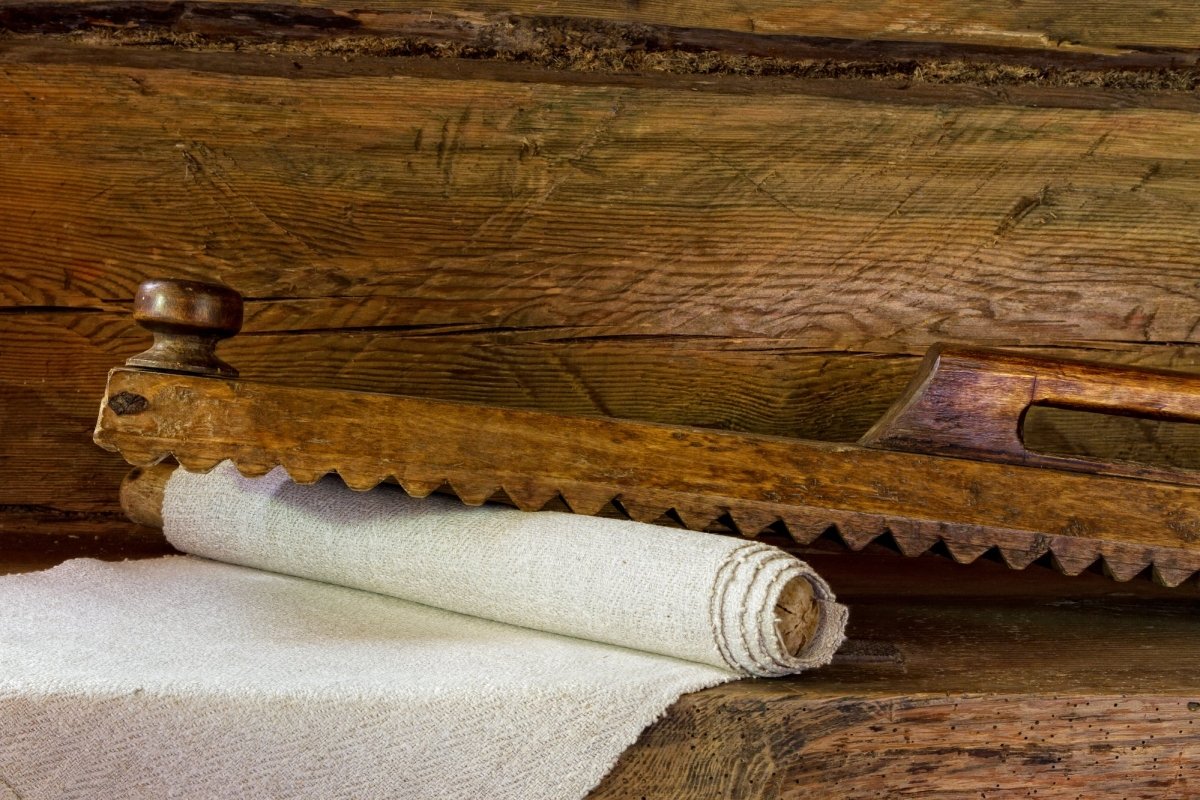Linen is one of the most popular fabrics for bedding, tablecloths, and napkins. Some can be nervous about washing their linen, but washing linens are an easy and straightforward process. Unlike cotton, linen is a durable fabric that gets better with each wash.
Different Washing Methods
The washing method of linen will depend on the manufacture of the product. One should always read the label of their product for care instructions. Here we will talk about three different methods and the steps to take for each method.
Machine Wash
Machine washing is one of the easiest methods but should only be used if the care instructions allow it.
- Separate Colors:
The first step if machine washing, is to separate the colors between darks and whites. It is very important not to mix whites with colors or dark linen. You also want to wash linens separately from other types of fabrics, so make sure that you are only putting products made from linen in the washing machine.
- Setting the Washer Machine:
The washer machine should be set to cold or lukewarm at the hottest, this will be about 30° Celsius or 86° Fahrenheit. You want to avoid hot water when washing linen, because that could shrink the fabric or even weaken the fibers in the fabric. In addition, you want to have the washer machine set to the gentle cycle. This is to keep the fibers of the linen intact.
- Other Tips:
Make sure that you do not overload the washer machine, as this may make it so the linens are not washed evenly. And last, make sure that you use mild detergent with no bleach. Bleach can break down the fibers in linen, which could ruin the fabric longevity.
Hand Wash
Some people prefer hand washing over the machine wash, while some products require it. Again, just make sure that you are reading your care instructions for your product.
- Combine Water and Detergent or Solvent:
Either in a tub, sink, or basin, combine lukewarm water with washing liquid. Remember, lukewarm is about 30° Celsius or 86° Fahrenheit. Sometimes the care instructions will have a ‘W’, which means the linen can be washed with a mild detergent. If that is the case, then you would mix one teaspoon of mild detergent into the lukewarm water. Other times the care instructions will have a ‘S’, which means the linens should be cleaned in a solvent. Make sure you read the care instructions on the particular linen you will be washing.
- Soak and Clean Linen:
Soak linen for about ten minutes. Once it has soaked, swirl and move the linen around a bit with your hands. Make sure that you do not ring, twist, or scrub fabric, as this can damage the fibers. Simply swirl the fabric around in the water.
- Rinse Linen:
Empty tub, sink, or basin of water and then refill with clean water. Swirl the fabric around to get the detergent out of the linen. Repeat this step a few times until the detergent is completely removed from the linen. This is very important, because if there is a lot of detergent left on the garment once it dries, it could ruin the fabric in the long run.
Dry Cleaning
Dry cleaning could prevent wrinkling, which the natural fibers of linen is prone to. Some prefer dry cleaning all their linens, as it saves time since it cuts out the step of pressing the linens after washing.
On the other hand, some care instructions require dry cleaning, especially with more delicate products.
Drying Linens
There are two ways to dry linens. One can either use a dryer or they can hang to dry.
If the care instructions allow dryer machines, you can place the linens in the dryer on low heat. Putting linens in a dryer can be helpful to get some of the wrinkles out. However, make sure that you stop the dryer and take out your linens while they are a little damp. You should then hang dry for the remainder of the time.
You can hang outside on a clothesline or indoors on a drying rack.
Ironing Linen
As mentioned, linen is prone to wrinkles. Some people love the wrinkled look and embrace it, while others would rather have a smooth linen look. If you prefer the smoother linen with no wrinkles, then you will have to iron your linen.
Your iron should be set anywhere between low and medium-hot heat. You want to iron your linen while it is still damp. If it has already dried all the way, simply put a damp towel over the linen before ironing.
If you are ironing white linen, you should iron on both sides. If you are ironing dark linen, you should just iron on the back.
Five Tips on Improving the Longevity of Linen
Some believe that washing linens over time can ruin the fibers, but that is not the case. Washing is not going to hurt linen and if anything, it can only help. Linen usually becomes softer and more desirable with more washes. Here we will go over five tips to help improve the longevity of linen.
- Avoid using bleach or detergents with bleach. Bleach can break down the fibers and linen, which can damage the fabric.
- If the water where you live is known for being hard water, use water-softening agents.
- Avoid water that is hotter than lukewarm. This can cause your fabric to shrink.
- Don’t skip out on rinsing linen, especially when handwashing.
- High heat can damage the fibers in linen, so if you avoid the iron that may be best. Some people prefer a steamer instead.


Leave a comment